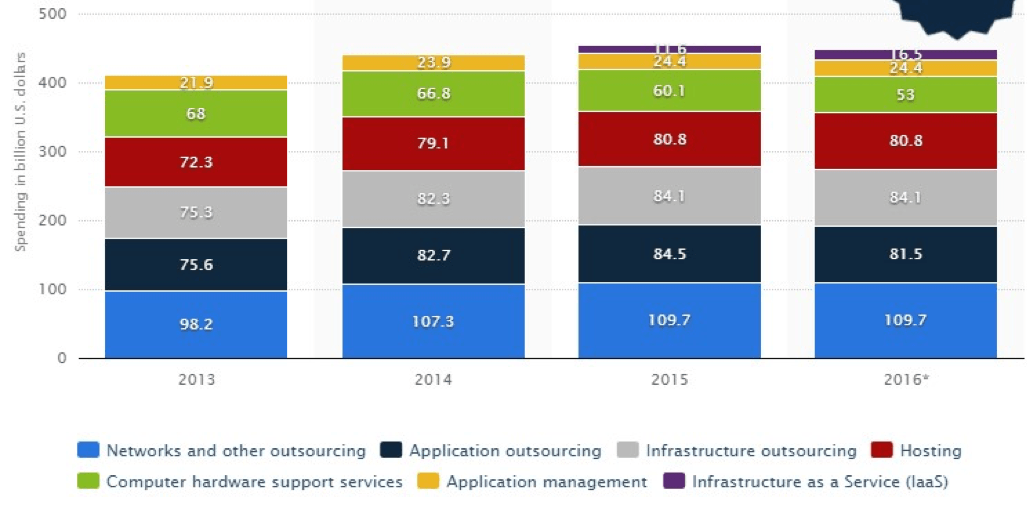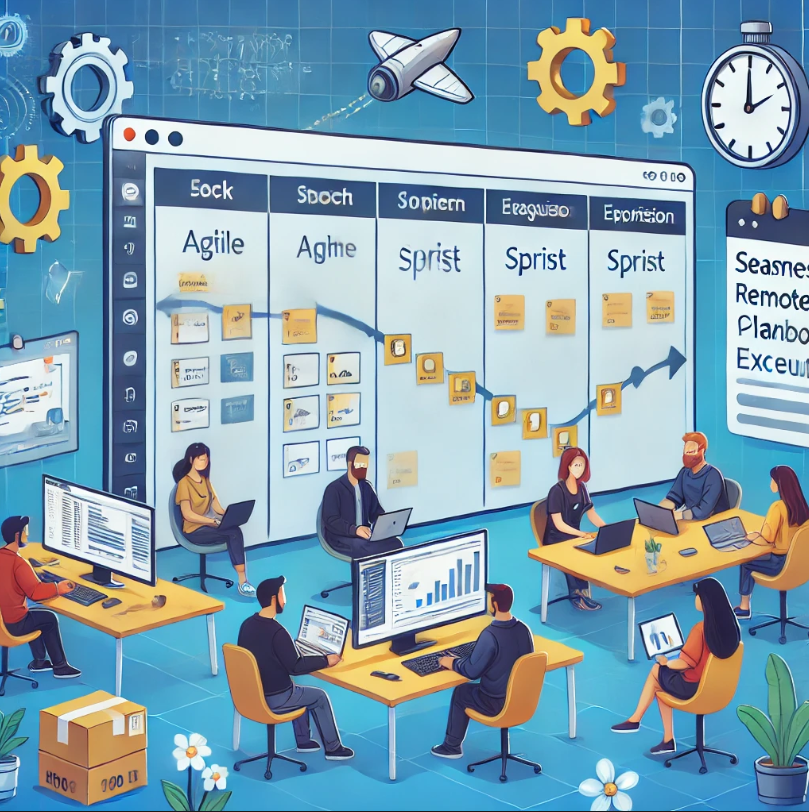
This is the first out of a series of seven articles about outsourcing IT-related projects. Each month, you will find a new article on this blog helping you to get a better understanding of why many companies like yours outsource their IT-projects and why this is beneficial for your organization as well. This first article gives you a background and explanation of outsourcing and its different varieties.
First of all, let’s dig into the history of the verb “outsourcing”. The first time the verb appeared was in the Journal of the Royal Society of Arts in the late 1970s in the context of outsourcing an engineering process from German car manufactures. Until today it is still unclear where the word originated from. The Online Etymology Dictionary says that it is derived from the adverb “out” and the verb “to source”. However, others argue that the word is just an abbreviation of “outside recourse using”. Regardless where the word is derived from, the basic description of outsourcing in economics literature is: the procurement of goods and services needed by the organization, under contract with an outside supplier. We prefer a more precise definition where outsourcing refers to a firm’s practice of paying another firm to perform a function that could be done or to develop a product that could be made in-house by the paying firm. Outsourcing is more than just a sale purchase agreement. It’s investing in a long-term relationship to create value added services or goods for the client’s company.
ONSHORING, NEARSHORING AND OFFSHORING DEFINED
In your career you may have heard of the words onshoring, nearshoring and offshoring and you may have used them interchangeably. However, they are different forms of outsourcing: offshoring and nearshoring refer to relocating a business process to another, usually, lower-cost location. Whereas nearshoring means that you relocate close to home, offshoring means that you relocate far from home. As you can see from the definitions, when you’re offshoring you aren’t necessarily outsourcing and when you’re outsourcing you aren’t necessarily offshoring.
In practice, outsourcing IT services and nearshoring/offshoring are closely related. After all it’s less costly and more convenient to use an existing organization in a foreign country to utilize recourses and knowledge rather than starting your own new business unit from scratch overseas.
This brings us to three forms of outsourcing:
- Onshore: outsourcing in the country your business origins from, usually to take advantage of high-skilled employees
- Nearshore: outsourcing to another nearby country, usually to take advantage of lower costs and to minimize the risks of cultural and time zone differences
- Offshore: outsourcing to another far-away country, usually to take advantage of lower costs and less stringent rules
TYPES OF OUTSOURCING
Before we get into the details of the different types of outsourcing, take a look at the magnitude of outsourcing different types of IT services in the chart below. As you can see it’s enormous. In the past, outsourcing IT services was mainly preserved for big corporations, but now Startups and SME’s massively do so as well.

(STATISTA 2016)
Now that the definitions and different forms of outsourcing are clear we can proceed to the types of outsourcing within the IT services environment. Below you can see the types of outsourcing within an IT environment:

Application services: refers to services delivered via software applications that directly impact business performance by exploring and exploiting information.
Infrastructure services: without an infrastructure, applications cannot run. Think about processing capacity, scalability, connectivity etc.
Operational services: are the services that keep the core IT environment of your business up and running.
Value enabling services: refers to services that are provided to make information assets more valuable. Vendor management or user support for example.
SUMMARY
It’s important to fully understand how outsourcing your IT project can support your firm in the achievement of business objectives and the utility that users receive from that product or service. After all, at the end of the day you want to deliver a great product or service made by productive and happy employees. Outsourcing software development could be a factor in achieving this for your organization. So, stay tuned for next month’s article where we will continue this series with an article where we will explain the reasons for companies to outsource their IT services.
Contact us for a free consultation or quotation.
Suggested Posts
How useful was this post?
Share it with your friends
Get our latest articles here!
Do you have any questions?
Help us improve the content of this Insightful blog by asking us questions. Manifera's team of experts will help you answer these questions as soon as possible.












